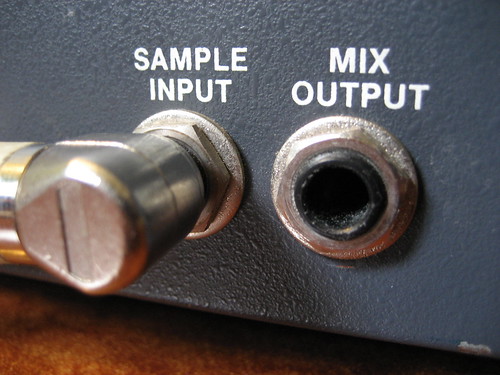 One of the greatest problems in health care, including complementary alternative medicine, is the oftentimes arbitrary nature of treatment and the proposed rationale for its usage. There are certainly some magical mechanisms purported to provide some rather intriguing (and often unsubstantiated) treatment effects.
One of the greatest problems in health care, including complementary alternative medicine, is the oftentimes arbitrary nature of treatment and the proposed rationale for its usage. There are certainly some magical mechanisms purported to provide some rather intriguing (and often unsubstantiated) treatment effects.
Although clinicians like to use phrases like "the right treatment for the right patient", there is oftentimes a lot of arbitrary clinical decision-making that takes place. Of course, this is a reality when you fail to utilize reliable strategies and clinical decision-making algorithms for assessment and treatment selection - but I digress.
At times, you would think that there are a lot of treatments being thrown at the wall, hoping that something will stick. This is what happens when you use the black box of treatment.
The term "black box" was originally a phrase used in science and engineering to denote a
"... device, system or object which can be viewed in terms of its input, output and transfer characteristics without any knowledge of its internal workings. Its implementation is "opaque" (black) ... the opposite of a black box is a system where the inner components or logic are available for inspection, which is sometimes known as a clear box, a glass box, or a white box."
When faced with little good and/or reliable clinical data, or a lousy subjective history, or both, clinicians are oftentimes left to implement the "black box" of treatment. They have witnessed some kind of net treatment effect in a previous scenario, they attribute it to some mechanism that may or may not really exist or be scientifically plausible (but it sure does sound good), and they apply it arbitrarily to (hopefully, fingers crossed) attain the same result.
Clinicians end up feeding the inputs into the black box - a medical diagnosis, a cluster of symptoms - and then, without much concern over the inner workings of the black box, select a treatment intervention. They may even get a treatment response. But let's face it: an apparent treatment response shouldn't necessarily surprise us. The summative effects can be due to many causes - immunological, neurological, and mechanical, among others. Tincture of time alone will produce a treatment effect. Placebo will produce a treatment effect. Simply thinking that you are getting better will produce a treatment effect. And, yes, there may actually be some well-researched, plausible scientific mechanisms at play as well.
What concerns me is that clinicians will then provide patients with pseudo-scientific explanations that are simply not plausible anatomically or physiologically. They don't seem to be concerned when doing so, as long as the patient feels good and the treatment is being reimbursed.
It is the scientific mechanisms that are truly at play that are most important for repeatability, control-ability, and consistency. What takes place within the black box? Is it reasonable for the black box be considered the accepted standard? And how do we reliably make the black box a clear box?
With that said, it is important for clinicians to acknowledge the limits of their understanding, build on a foundation of scientific plausibility, and phrase it as such. Buyer beware of the black box. There's a lot of woo in there sometimes.
Photo credits: krunkwerke
 "Running Injuries: Etiology And Recovery- Based Treatment" (co-author Bridget Clark, PT) appears in the third edition and fourth editions of "Clinical Orthopaedic Rehabilitation: A Team Approach" by Charles Giangarra, MD and Robert C. Manske, PT.
"Running Injuries: Etiology And Recovery- Based Treatment" (co-author Bridget Clark, PT) appears in the third edition and fourth editions of "Clinical Orthopaedic Rehabilitation: A Team Approach" by Charles Giangarra, MD and Robert C. Manske, PT.
 Allan Besselink, PT, DPT, Ph.D., Dip.MDT has a unique voice in the world of sports, education, and health care. Read more about Allan here.
Allan Besselink, PT, DPT, Ph.D., Dip.MDT has a unique voice in the world of sports, education, and health care. Read more about Allan here.
 Top 5 finalist in three categories: "Best Overall Blog", "Best PT Blog" and "Best Advocacy Blog".
Top 5 finalist in three categories: "Best Overall Blog", "Best PT Blog" and "Best Advocacy Blog".